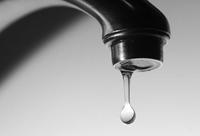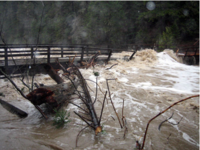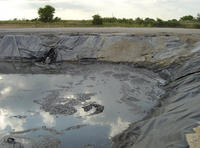-
Keeping water clean
Cardiff University researchers create a real-time broadband monitor to detect and warn of impurities in water supplies; the new monitor works by using bioluminescence to detect the presence of potentially toxic substances of chemical or biological origin and immediately warn of suspicious change
-
-
China admits to critical flaws at world’s largest dam
Last week, the Chinese government made a rare announcement and publicly admitted that there were critical problems at the Three Gorges dam, the world’s largest hydroelectric dam, lending support to the growing opposition to future dam projects; with the approval of Chinese Premier Wen Jiabao, the country’s second in command, last Thursday the State Council announced that the Three Gorges dam had been plagued by a series of problems “urgently in need of resolution”; problems include ecological deterioration, geological disasters, and the lingering uncertain status of more than one million people displaced by the dam; this is the first time such a high-ranking government official has publicly acknowledged the dam’s problems
-
-
University of Oklahoma student offers solutions Ethiopia's water problems

In Ethiopia’s Rift Valley, the high levels of fluoride in the drinking water result in dental and skeletal disease; left untreated, fluorosis causes darkening of the teeth and bone deformities; a University of Oklahoma student has been investigating inexpensive, sustainable and locally available solutions, such as adsorption — a useful technology for fluoride removal from drinking water because it does not require energy input outside of gravity and, depending on the material used, can be very effective at removing fluoride to meet the World Health Organization standard
-
-
Engineering students win wastewater treatment competition
In a surprise win, Humboldt State University (HSU) students recently bested engineering students at top ranked California universities to gain first place at the annual American Society of Civil Engineers Mid-Pacific Water Treatment Competition; this year teams were asked to build a system that would treat contaminated water that was heading toward a sensitive wetland ecosystem after an earthen levy around a biosolids compost facility had been breached; the teams were challenged to either design a containment system for the water or a treatment system; the HSU team won the competition beating U.C. Berkeley by more than thirty points
-
-
New technology quickly detects bioattacks on water supply systems
If pathogens enter into a city water supply network, many people may fall ill quickly; to protect against this biological threat, researchers have developed a detection system, partly based on nanotechnology, that can warn authorities in time
-
-
U.K. struggles to reduce water usage as supplies dwindle

An uncharacteristically warm and dry spring in the United Kingdom has forced water companies to begin conserving water, but a recent survey indicates that the method currently employed is widely unpopular and grossly affects low income families; some reservoirs are 20 percent below normal levels and eleven rivers are at their lowest in twenty years; in 1989 the British government mandated that all new homes have water meters installed and introduced a usage plan which charges households based on the amount of water they consume; the plan has proven effective in reducing water usage, but costs have increased by more than 50 percent
-
-
Maui proposes $44 million for water infrastructure projects
Alan Arakawa, the mayor of Maui County, has proposed spending nearly $44 million on water infrastructure projects in 2012, a sharp increase of $20 million from current spending levels;the budget increases would go to the Department of Water Supply which has requested funding to undertake several critical infrastructure investments; the department would allocate $10 million to rehabilitate the Waikamoi flume, which is a critical source of water for Upcountry residents; the department also wants to spend $200,000 to improve water pipelines in Paia-Haiuku and $2.3 million for Wailuku-Kahului water source improvements; council members have balked at the large budget increases needed to pay for these projects
-
-
Heavy snows divert Colorado River water shortage, for now

This winter, heavy snowfall in Utah, Colorado, and Wyoming have helped to avert a water crisis along the Colorado River; after an eleven year drought in the region, residents have begun to worry about impending water shortages; the Colorado River supplies nearly thirty million people in seven states with drinking water as well as Mexico; the heavy snows could bring only a brief moment of respite; with demand exceeding supplies and with each year bringing less water, there is potential for a future disaster; if supplies continue to decline, water deliveries will be reduced when Lake Mead’s water level drops below 1,075 feet; as of 1 February, Lake Mead’s water level was at 1,091feet
-
-
Water infrastructure budgets to see massive cuts in 2012
Next year water infrastructure projects and programs are expected to see massive budget cuts as President Obama has proposed slashing infrastructure spending at the Environmental Protection Agency (EPA) and the U.S. Army Corps of Engineers; the Drinking Water State Revolving Fund (SRF) will see nearly $400 million cuts and the Clean Water SRF will be cut nearly $600 million; according to Lisa Jackson, the EPA administrator, these cuts in SRF budgets reflect a return to a more “sustainable level”; states worry that cuts will make it difficult to fund future infrastructure upgrades; reports have shown that the United States faces a $500 billion shortfall for water infrastructure funding over the next twenty years
-
-
Lodi, CA considers privatizing $36 million water plant
The city of Lodi, California is in the midst of building a new $36 million water treatment plant, and is considering privatizing the facility; the new plant will open in 2012 and provide the city with one-third of its drinking water; Lodi is in a tight financial situation and is considering methods to reduce costs like privatizing the new treatment plant; the treatment facility is expected to cost $1.8 million to operate annually with an additional $1 million for payroll; Lodi residents have proposed that the city hire a private company to save money on payroll
-
-
Politics stalls $250 million water plant in North Vegas
A $250 million wastewater treatment plant in North Las Vegas suffered a major setback after county commissioners denied the plant’s request to use county land; the city had planned to route treated water through unincorporated county territory and pay the county $50,000 a year, but the county voted six to one against the plan; county commissioners say that the city has not been cooperative; commissioners were particularly upset about the city’s lucrative deal with Nellis Air Force Base that would take $1.25 million in revenues from the county each year; the plant has been under construction for years and needed the use of a Clark County pipeline to operate
-
-
New tool to build water infrastructure resiliency
The Environmental Protection Agency (EPA) is set to roll out its new Community-Based Water Resiliency (CBWR) Electronic Tool this spring; the tool is designed to give organizations in charge of critical water infrastructure a way to assess their community’s ability to continue delivering water in the event of service disruptions and enhance resiliency; a major natural disaster or terrorist attack could leave large portions of a state without access to drinking water for months; Matthew Everett from the EPA will be present at the upcoming Government and Security Expo to discuss the EPA’s new initiative; the conference will be held from 29 March to 31 March in Washington, D.C.
-
-
Scientists: water woes ahead

Within a generation, water demand in many countries is forecast to exceed supply by an estimated 40 percent.
In other parts of the world prone to flooding, catastrophic floods normally expected once a century could occur every twenty years instead; meanwhile, spending on technologies and services to discover, manage, filter, disinfect, and desalinate water, improve infrastructure and distribution, mitigate flood damage, and reduce water consumption by households, industry, and agriculture is expected to rise to a trillion dollars annually by 2020 -
-
Mitigation policy could halve climate-related impacts on water scarcity
Even without the effects of climate change, as much as 40 percent of the world’s population will be living under water scarce conditions by 2020; climate change is expected to influence future water scarcity through regional changes in precipitation and evaporation; most climate models suggest rainfall is likely to decrease in the subtropics and increase in mid-latitudes and some parts of the tropics; in the latter, mitigation efforts could actually reduce the amount of extra water potentially available
-
-
Radioactive waste contaminates drinking water, EPA does nothing

Recent Environmental Protection Agency (EPA) documents show that Pennsylvania’s drinking water has been contaminated with radioactive waste from natural gas drilling; energy companies have been extracting natural gas with a new drilling technique called “hydrofracking”; this process results in millions of gallons of wastewater that is contaminated with dangerous chemicals like highly corrosive salts, carcinogens, and radioactive elements; EPA documents reveal the process has been contaminating drinking water supplies across the country with radioactive waste; in Pennsylvania more than 1.3 billion gallons of radioactive wastewater was trucked to plants that could not process out the toxins before it released the water into drinking supplies
-
- All
- Regional
- Water
- Biometrics
- Borders/Immig
- Business
- Cybersecurity
- Detection
- Disasters
- Government
- Infrastructure
- International
- Public health
- Public Safety
- Communication interoperabillity
- Emergency services
- Emergency medical services
- Fire
- First response
- IEDs
- Law Enforcement
- Law Enforcement Technology
- Military technology
- Nonlethal weapons
- Nuclear weapons
- Personal protection equipment
- Police
- Notification /alert systems
- Situational awareness
- Weapons systems
- Sci-Tech
- Sector Reports
- Surveillance
- Transportation
Advertising & Marketing: advertise@newswirepubs.com
Editorial: editor@newswirepubs.com
General: info@newswirepubs.com
2010-2011 © News Wire Publications, LLC News Wire Publications, LLC
220 Old Country Road | Suite 200 | Mineola | New York | 11501
Permissions and Policies
Editorial: editor@newswirepubs.com
General: info@newswirepubs.com
2010-2011 © News Wire Publications, LLC News Wire Publications, LLC
220 Old Country Road | Suite 200 | Mineola | New York | 11501
Permissions and Policies
